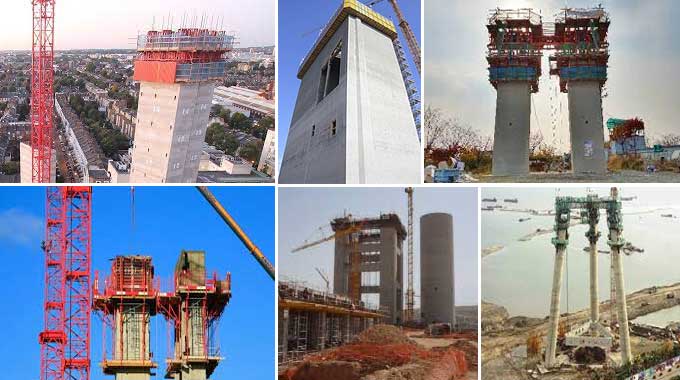
Slip Formwork Construction 101: The Essential Guide for Every Construction Worker

In contrast to conventional formwork systems, slip-form construction can build vertically and horizontally in a continuous fashion. The slip-form allows concrete to pour continuously into a moving formwork. The process stops once casting is complete.
Define Slip Formwork
Pouring concrete requires a mold known as formwork, which is temporary. Among the materials used in Traditional Formwork are wood, steel, glass fiber, and some others. Using slip forming, you can build mega structures such as chimneys, towers, silos, roads, and bridges in a short period of time.
Components of Slip Formwork
There are many features to the slip form system. However, yoke legs are the most common feature. To make the entire structure act as one, yoke legs support and lift the weight.
As well as serving as a support mechanism, yoke legs also connect beams, scaffoldings, and platforms. These brackets control how the yoke legs move. Concrete placement will be possible with these brackets.
Types of Slip Formwork
Vertical Slip Formwork
The vertical slip form system surrounds the concrete form with a platform that allows the workers to work safely while standing. The hydraulic jacks raise the concrete form and the working platform. Several types of hydraulic lifters are available to lift the formwork on a horizontal projection.
Horizontal Slip Formwork
Horizontal Slip formwork constructs the traffic separation walls and pavements. The vibration works, the compaction takes place, and then the slip moves at a slower pace. Highway construction often employs this technique.
Cantilever Jump Formwork
A motor lifts and expands the formwork in the cantilever jump Formwork. As a result, this formwork attaches directly to the story height to reduce crane use.
Conical Formwork
The conical formwork consists of a cantilever & overlapping plates have conical shapes. Steel yoke frames attach these plates. It is possible to automatically adjust the geometry of a cantilever and an overlapping plate. One of the special slip formwork techniques is conical formwork, which uses for the construction of walls of various thicknesses.
Egg Shape Formwork
With the principles of egg shape formwork, the method can adapt to any geometry. As a result, this method involves removing or extending a cantilever plate from the periphery and modifying the circumference. By adjusting the circumferential slope and the axis, the curvature can be easily adjusted in this method.
Benefits of Slip Formwork
1. High-rise structures can be constructed economically using Slip form construction.
2. Its construction uses less labor, resulting in lower labor costs.
3. Plastering is not needed on the finished surface.
4. It is not necessary to use a crane to move the Slip Formwork upward.
5. High production rates can be achieved with Slip Formwork.
6. As a result, the workers are more protected and they have a more ergonomic working environment.
7. During the construction of the tapering structures, there will be more flexibility.
8. Because slip formwork can be erected quickly, the construction project can complete more quickly.
9. Wall sections can make uniform & the surface can be smooth and even.
To learn more, watch the following video tutorial.
Video Source: Engineering College Banswara
Drawbacks of Slip Formwork
1. The various components need to arrange separately, which takes a little longer.
2. Supervision by an expert is necessary when using slip formwork.
3. Construction sites are difficult to stock.
4. Slip forms require a higher initial investment than traditional formwork.
5. Work must continue regardless of the weather conditions.
6. A certain training period was required before laborers could operate the advanced equipment and machinery.
7. Rapid construction requires good coordination between the various site organizations.
8. In addition to increasing construction productivity and completing projects within a given time, it can also decrease costs.


